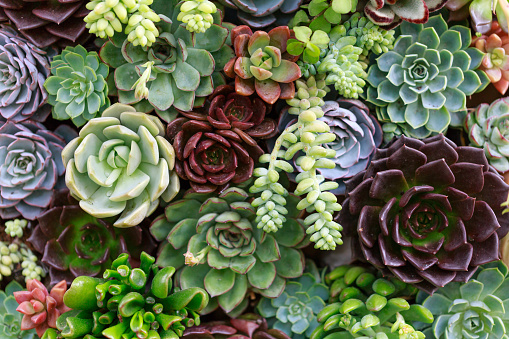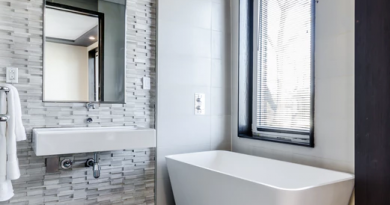Why Do Succulents Turn Dark?
One reason you probably took home a succulent in the first place is that you’ve heard that it’s pretty resilient. Indeed, it is. It’s very low-maintenance and can easily withstand a little bit of neglect. That said, like other plants, succulents can still be prone to different issues if they’re not growing in their optimal environment. One of these issues, for instance, is leaf discoloration.
Why is your succulent turning dark? Is it to show the natural beauty of dark succulents, or is it something else entirely? That’s what we are going to talk about in this quick post.
Contents
Why Do Succulents Turn Dark?
As mentioned, there are two possible reasons that can make a succulent turn dark. The first is that it’s naturally occurring. For instance, it is normal for a young Echeveria Black Prince to be in a greenish color, as its rosette center sometimes appears in a green hue. However, as the plant starts to mature, you’ll begin noticing its leaves getting darker. This succulent is not called Black Prince for nothing.
Secondly, it might be because your plant is suffering from leaf discoloration. There are different reasons why your succulents struggle and change in color. The shade your plant is turning into can help you determine what that issue might be.
Common Culprits Behind Leaf Discoloration
Here are possible reasons behind leaf discoloration and how to address them:
Sun Damage
Are your succulents’ leaves turning brown? The reason might be from sun damage. Succulents can withstand a little bit of drought, but their leaves can be particularly vulnerable to intense heat. You can consider this similar to the sunburn we get when staying out in the sun without adequate protection for too long.
As long as you keep your plant substantially cool and hydrated, getting sunburnt shouldn’t be enough to kill a mature succulent. Younger plants, however, are a completely different case.
Also, sun damage can leave a lasting impression on these leaves. This means that the discoloration may never go away, at least until the damaged leaf eventually gets shed and replaced anew.
Here’s the solution: The best way to prevent and resolve this issue is to put your succulent in a spot where it will get bright yet indirect light. Near a sunny window is a good idea. This way, you’ll be able to provide the amount of light it needs to thrive without it getting burnt to a crisp.
Underwatering
Are your succulents’ leaves turning brown yet also shriveled at the same time? Your plant is probably getting sunburnt and underwatered. Poor thing! Even succulents need to hydrate during those long, hot summer days.
Here’s the solution: Fortunately, this issue is still easily solved. All you need is to give it a good watering. One emergency measure that we perform is soaking.
You can do this by placing your pot inside a bigger container with at least three inches of water in it. Then, let your succulent sit there until you feel its parched soil getting moist. After doing so, remove your pot, allow any excess water to seep out, and make sure this kind of neglect doesn’t happen again.
Overwatering
Finally, is your succulent turning black even though it’s not really naturally so? This is a tell-tale sign of overwatering. The leaves may also end up being soft and mushy.
Unlike the previous issues, this is a more serious problem that must be dealt with immediately after you start seeing the first signs. Often, this means your succulent is rotting from the inside, starting from its roots, due to being exposed to too much water.
Here’s the solution: Depending on the current state of your plant, there might still be a way to save it. The first step is to remove your plant from its soil. After all, this issue can also be caused by planting your succulent in the wrong potting mix.
Once it’s dislodged, examine your plant and check if it’s possible to cut off any damaged parts. Repot it in a much better draining soil mix this time.
If you notice that your succulent is still struggling, the best option is to probably harvest cuttings from it to propagate instead. We recommend getting the top parts since root rotting usually gets the roots and bottom part of the plant first. Even saving a handful of leaves can give your plant a possible future.
Allow your cuttings to completely callous over to prevent further root rotting. Then, once ready, you can place them atop a tray of moist and nutrient-rich potting mix and wait for them to root.
Succulents Going Dark
There are certain succulents that can go dark and have their leaves turn black naturally. That’s where their beauty lies. However, if you’ve discovered that your succulent doesn’t really come in this color variant, it might be a sign of leaf discoloration and potential crisis. Fortunately, most of these issues can easily be prevented and avoided.
By keeping in mind the tips we shared, we’re confident you won’t just be able to save your plant but make the most of the situation and grow your plant collection even further.




